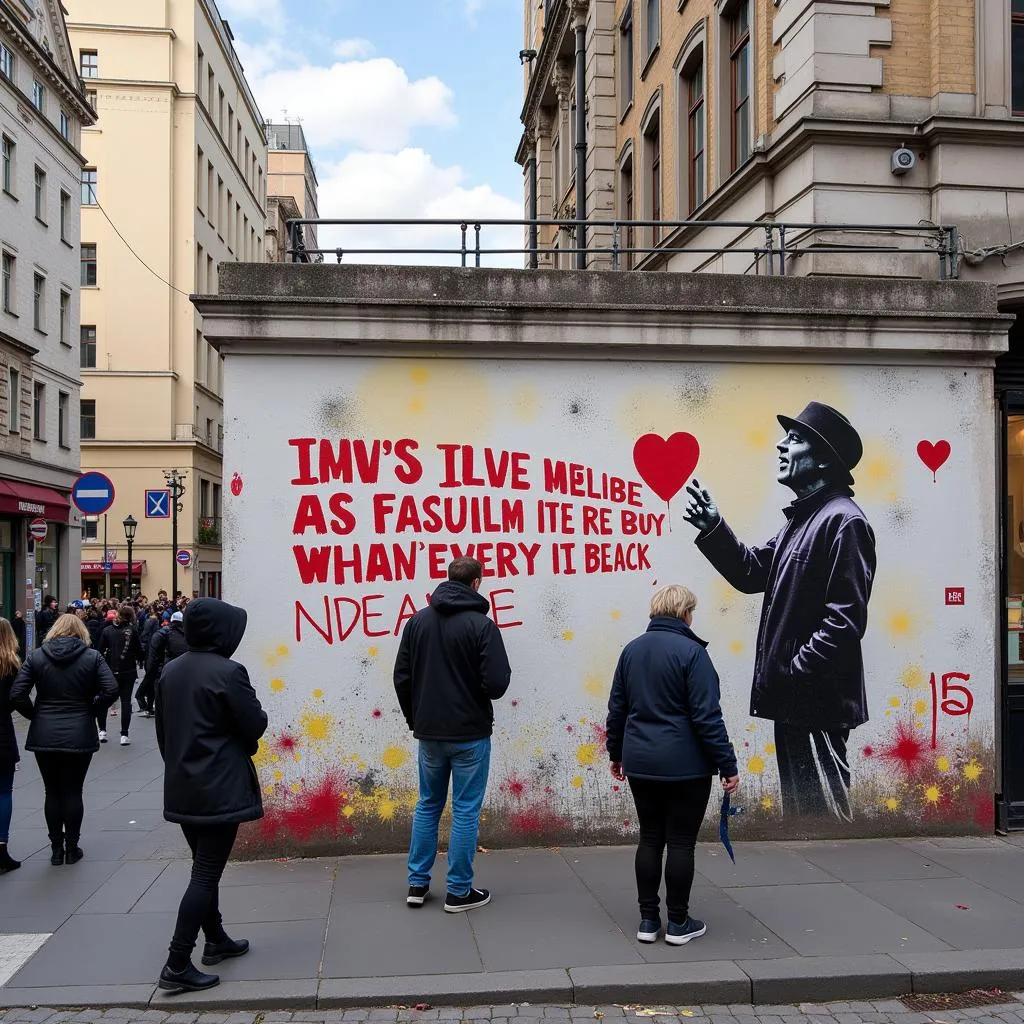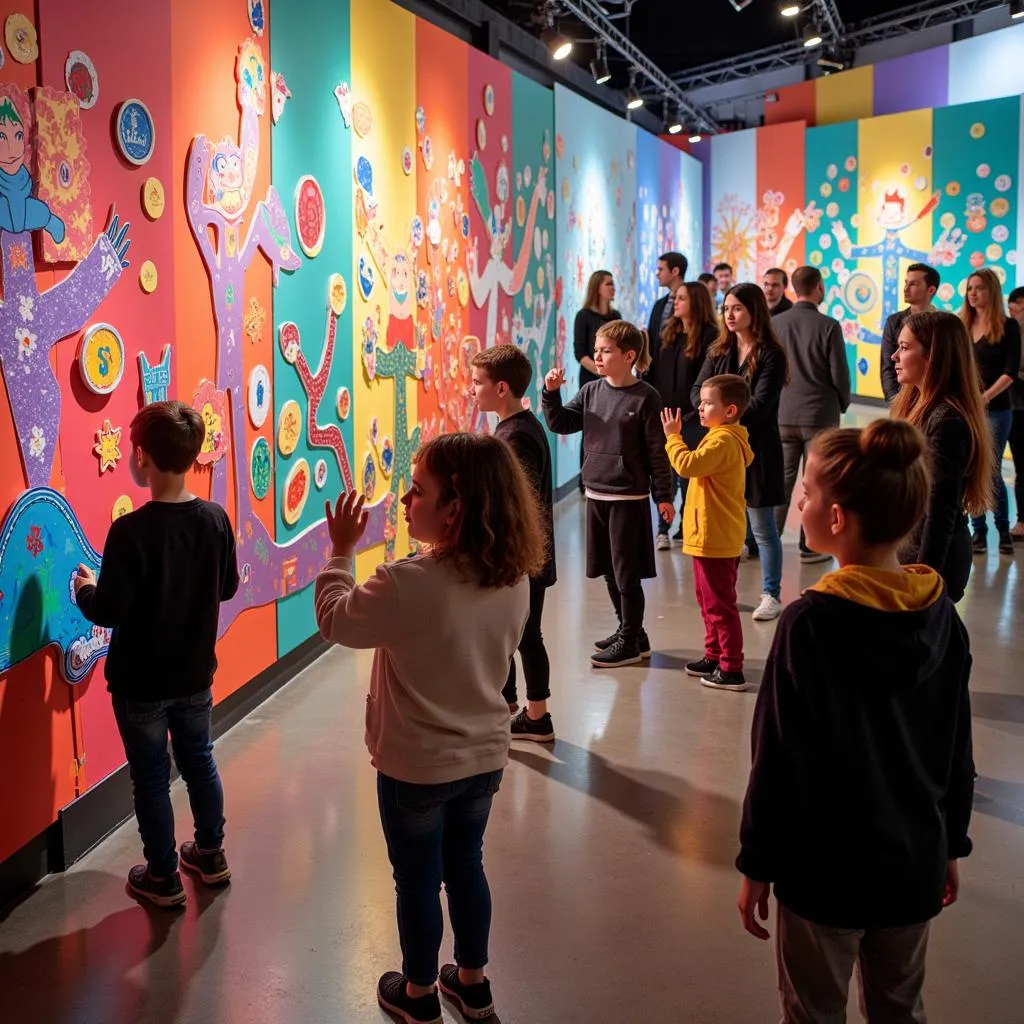The IELTS Speaking test often includes questions about influential figures in arts and culture. One common topic is describing a famous artist or musician you admire. This article will provide sample answers and tips to help you excel in this speaking task.
Part 1: Introduction and Interview
In Part 1, the examiner may ask general questions about music and art. Here are some possible questions and sample answers:
- Do you enjoy listening to music?
Sample answer (Band 7-8):
“Absolutely! Music plays a significant role in my daily life. I find it incredibly therapeutic and often listen to various genres depending on my mood. Whether I’m working, relaxing, or exercising, there’s always a suitable playlist to enhance the experience.”
- What kind of art do you appreciate most?
Sample answer (Band 8-9):
“I have a particular fondness for contemporary art, especially installations and mixed media pieces. I’m fascinated by how modern artists push the boundaries of traditional art forms and challenge our perceptions. Recently, I’ve been exploring digital art and its intersection with technology, which I find utterly captivating.”
Part 2: Long Turn
Here’s a sample cue card related to describing a famous artist or musician:
Describe a famous artist or musician you admire
You should say:
- Who this person is
- What they do
- How you know about them
- And explain why you admire them
Sample answer (Band 7-8):
“I’d like to talk about Adele, a world-renowned British singer-songwriter who has captivated audiences globally with her powerful voice and emotionally charged songs.
Adele is primarily known for her exceptional vocal abilities and her heartfelt ballads. She burst onto the music scene in 2008 with her debut album ’19’ and has since released several critically acclaimed albums, each named after her age at the time of recording.
I first became aware of Adele when her song ‘Someone Like You’ dominated the charts in 2011. The raw emotion in her voice and the poignant lyrics immediately struck a chord with me. Since then, I’ve followed her career closely, watching her performances and interviews whenever possible.
What I admire most about Adele is her authenticity and down-to-earth personality. Despite her enormous success, she has remained true to herself and her roots. Her music resonates with people from all walks of life because it touches on universal themes of love, loss, and personal growth. Moreover, her ability to convey deep emotions through her voice is truly remarkable.
Adele’s journey from a working-class background to international stardom is also inspiring. She has overcome personal challenges and used her experiences to create music that connects with millions. Her dedication to her craft and her unwavering commitment to producing quality music, rather than following trends, is something I greatly respect.”
 Adele performing on stage
Adele performing on stage
Sample answer (Band 8-9):
“I’d like to discuss Banksy, the enigmatic British street artist who has revolutionized the art world with his thought-provoking and often satirical works.
Banksy is renowned for his politically charged and socially conscious graffiti art that frequently appears unexpectedly in public spaces. His identity remains a mystery, which adds to the intrigue surrounding his work. Banksy’s art tackles a wide range of issues, from consumerism and war to social inequality and environmental concerns.
I first encountered Banksy’s work through social media, where images of his provocative pieces often go viral. His ability to convey complex messages through seemingly simple images immediately captivated me, prompting me to delve deeper into his body of work and the stories behind his art.
What I find most admirable about Banksy is his unwavering commitment to using art as a medium for social commentary. He challenges the status quo and forces viewers to confront uncomfortable truths about our society. His innovative approach to art, such as his self-destructing painting at an auction, pushes the boundaries of what we consider art and how we value it.
Furthermore, Banksy’s anonymity is a powerful statement in itself, shifting focus from the artist to the art and its message. This approach democratizes art, making it accessible to everyone rather than confined to galleries. His work sparks conversations about important issues and encourages critical thinking, which I believe is the hallmark of truly impactful art.
Banksy’s influence extends beyond the art world, inspiring countless individuals to use their creativity as a form of expression and activism. His ability to blend humor with serious topics makes his art both entertaining and enlightening, a rare combination that continues to resonate with people worldwide.”
 Banksy's thought-provoking street art
Banksy's thought-provoking street art
Follow-up questions:
- How has this artist or musician influenced your life?
- Do you think artists and musicians have a responsibility to address social issues?
Sample answer (Band 8-9):
“Banksy’s work has profoundly influenced my perspective on art and social issues. His ability to convey complex messages through visual art has inspired me to look more critically at the world around me and consider how I can use my own skills to raise awareness about important issues.
Regarding artists’ and musicians’ responsibility to address social issues, I believe they have a unique platform and influential voice that can be incredibly powerful in shaping public opinion and instigating change. While it’s not necessarily an obligation, those who choose to use their art for social commentary often create the most impactful and memorable work. Artists like Banksy demonstrate how creativity can be a potent tool for challenging the status quo and encouraging societal reflection.”
Part 3: Two-way Discussion
Examiner: “Let’s talk about the role of art in society. Do you think art should be accessible to everyone?”
Sample answer (Band 7-8):
“I strongly believe that art should be accessible to everyone. Art has the power to inspire, educate, and provoke thought, and these benefits shouldn’t be limited to a select few. Many museums now offer free admission days or virtual tours, which is a step in the right direction. However, we could do more to bring art into public spaces, like Banksy does with his street art. This not only makes art more accessible but also enhances our daily environment.”
Sample answer (Band 8-9):
“Absolutely, I’m a firm believer in the democratization of art. Art has the intrinsic ability to transcend social and economic barriers, fostering cultural understanding and personal growth. By making art more accessible, we’re not just enriching individual lives but also cultivating a more creative and empathetic society.
However, accessibility goes beyond just physical or financial access. It’s also about making art relatable and understandable to a wider audience. This might involve reimagining traditional art education, integrating art into other disciplines, or encouraging interactive and participatory art forms. The digital age has opened up new avenues for accessibility, allowing people to engage with art globally through virtual exhibitions and online communities.
Moreover, increasing art accessibility can fuel creativity and innovation across various sectors, contributing to societal progress. It’s not just about viewing art, but about fostering a society that values and nurtures creative thinking.”
 Interactive art exhibit engaging diverse audience
Interactive art exhibit engaging diverse audience
Key Vocabulary and Phrases
-
Captivate (verb) /ˈkæp.tɪ.veɪt/: To attract and hold the interest of someone by being interesting, attractive, etc.
Example: “Adele’s powerful voice captivates audiences worldwide.” -
Enigmatic (adjective) /ˌen.ɪɡˈmæt.ɪk/: Difficult to understand or mysterious.
Example: “Banksy’s enigmatic persona adds to the intrigue of his art.” -
Provoke thought (phrase): To stimulate or incite thinking or consideration.
Example: “Great art often provokes thought and challenges our perspectives.” -
Resonate (verb) /ˈrez.ə.neɪt/: To have particular meaning or importance for someone; to affect or appeal to someone in a personal or emotional way.
Example: “Banksy’s social commentary resonates with people from all walks of life.” -
Transcend (verb) /trænˈsend/: To go beyond the usual limits of something; to be or do something to a degree that is far better or greater than what is usual.
Example: “True art has the power to transcend cultural and linguistic barriers.”
Tips from an IELTS Examiner
-
Practice describing artworks or music: Regularly describe paintings, sculptures, or songs to improve your descriptive language and fluency.
-
Stay informed: Keep up with current trends in art and music to have relevant examples to discuss.
-
Develop personal opinions: Form and articulate your own views on different art forms and artists. This shows critical thinking skills.
-
Use a variety of vocabulary: Incorporate sophisticated vocabulary related to art and music, but ensure you use it accurately and naturally.
-
Structure your answers: Organize your thoughts logically, especially in Part 2. Use clear introductions, body points, and conclusions.
-
Engage with the topic: Show genuine interest and enthusiasm when discussing art and music. This can positively impact your fluency and pronunciation scores.
By following these tips and using the sample answers as inspiration, you’ll be well-prepared to discuss famous artists and musicians in your IELTS Speaking test. Remember, the key is to express your ideas clearly and confidently while showcasing your English language skills.
Describe a famous cultural figure in your country for more practice on discussing influential figures. Additionally, you might find it helpful to describe a famous singer or musician from your country to broaden your repertoire of examples.


